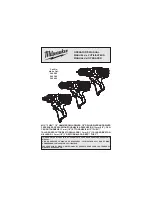
Mill Drill Operations
Section (1) Pivoting Jig Option
How to use the Power House Pivoting Jig
The Pivoting jig is a 4 axis jig that is designed to allow the operator to drill all 3 holes
with out removing the ball from the jig. Using the proper sequence you can also install a
thumb slug, oval the slug and trim the slug before removing the ball. This type of drilling has
been proven to be the most accurate and the most useful in providing the value and service to
your customers.
1.
Mark the ball with the lay out you have chosen. You must have the center of grip and
the finger and span lines complete.
2.
Place the ball in the jig with the center of the grip straight up towards the drill chuck.
(To make the ball easier to place in the jig loosen the side locks on the outside of the
jig and roll the jig forward, once in place roll the jig back until it appears to be level
across the top)
3.
Place the safety ring over the top of the ball (Note it will drop over the 2 adjusting bolts
on the left hand side of the jig and then it will slide down on the ball and align itself)
Next on the right side of the jig pull the lock nut up onto the safety plate and lightly
tighten it.
4.
This step is designed to provide pin point accuracy that most machines can not provide.
Check to make sure that both your forward and reverse and left to right are set on
zero. Next place a bit in the chuck and pull the point of the bit to about 1/8 of an inch
above the ball and lock the handle into place. ( To do this use the silver handle on the
left hand side of the head of the machine, this is the quill lock and allows you to hold
the bit close to the ball so both hands will be free. Loosen the outside locks nuts and
roll the jig forward and back. If the ball is aligned perfectly straight in the jig the point
of the bit will stay above the center line on the ball. If aligned then tighten the lock
knob for the safety plate all the way and you are ready to move on. If not aligned
loosen the lock knob and adjust the ball until the center line is straight under the bit.
This step is very important as it insures a pin point accuracy and ball spec to be
duplicated no matter who is drilling them. Basically if you start from the same point
each time you drill a ball and you hit the lines they will all feel exactly the same.
5.
Set the forward or reverse pitch by using the table handle on the front of the machine.
If you want reverse in the thumb or forward in the fingers the ball will need to move
REV A 12-2-05 10











































